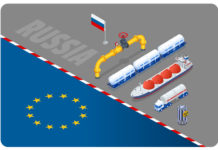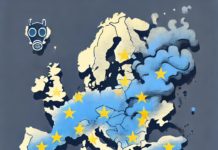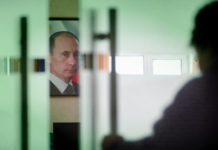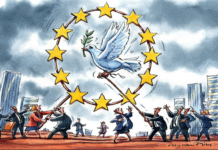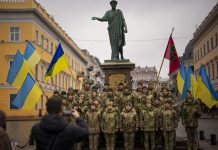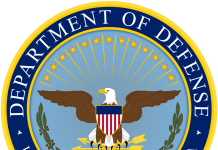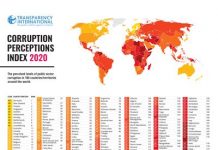With an abrupt debut in the 20’, the world is looking for a winning strategy to contain the coronavirus crisis that has gripped it. We already see different strategies and narratives being applied by different national and local authorities. Asian nations are generally praised for their overall response, while Europe and America are not as well placed to contain their epidemics. But as the very definition of our enemy, the SARS-CoV-2 pandemic, refers to a worldwide spread, how efficient will be a fragmented, national response to this crisis? As with any war, we need a flag to rally to. A Stockholm student’s proposal of an Earth flag could be the symbol of the fight against the pandemic.
The novel coronavirus crisis is overlapping in yet to be understood ways with a vast array of other ongoing crises. In Iran, while mass graves dug by authorities are being observed from space, Khamenei said in a tweet that he has reasons to believe that the outbreak is a “biological attack”, referring to the United States. Tehran is already on a war footing with the U.S. due to the assassination of Soleimani, in January. When thinking that the JCPOA is suspended, if not de facto null, a disastrous outbreak curve in Iran, with its own academics saying that as much as 3.5 million deaths could occur, could lead to a nuclear capable Iran, one year from now, with a furious and resentful population, a very dangerous scenario.
In North Korea, officials say that there are no recorded cases, but that seems highly unlikely. As Sue Mi Terry says for Foreign Affairs, North Korea cannot insulate itself completely from China and it is in a very bad position to tackle a serious outbreak. Even though consecutive Kim regimes seem to be very resilient to crises, a young leader that needs to appease or distract an unruly elite, might turn to an aggressive foreign posture, again with nuclear weapons at his disposal.
The European Union is also in a bad position. A continent already plagued by populism and recovering after the 2015 refugee crisis, exposed divisions between nations once the outbreak signaled its gravity and spurred a myriad of different national measures, of different magnitude. While the European Union is intrinsically a supranational entity, it did not seem to be able to coordinate resources at a continental level. Britain initially wanted to go on a completely different path in tackling the virus but eventually made a U-turn and aligned with stricter measures seen in continental Europe. This lack of coordination and support will likely remain an open and painful political issue long after the outbreak will be contained. In the United States, severe political polarization has already impeded the fight against the virus. Americans are divided along political lines with regards to the correct posture during the epidemic. This is nowhere more evident than reading comments to epidemic related content on highly polarized online publications. For example, the far right leaning publication Breitbart has a lot of its readers saying that this is being exaggerated by the press, in order to damage Trump’s chance at reelection and that the coronavirus is no worse than the seasonal flu. In the far left leaning corner, comments on articles published by the Daily Beast encourage staying at home and flattening the curve, blaming Trump for absolutely everything. Political hyper-polarization is extremely dangerous in situations where a quick, coherent response is needed.
World War V
It is clear that the pandemic, by definition, is a global threat and it is not a cliché to think and to ask for a global response. The fact that a number of political leaders are using terminology as “we are at war” or the “war against the virus” is a manifestation of the belief that this threat needs a military style mobilization in order to be contained and casualties to be limited. At the same time, the military, through its nature, can be very helpful with logistics and coordination during times of crises. Recently the American Department of Defense deployed one hospital navy ship on each of its coasts to bolster support for medical facilities on land, specifically by transferring non-coronavirus patients from land. The military is patrolling my home city of Bucharest, in scenes that we have not witnessed since the revolution that toppled the Communist regime, in 1989.
This may seem alarmist, calling the crisis a war, especially because wars fought against nouns do not end well. Just look at the War on Drugs or the War on Terror. Both doctrines and strategies failed to curb the threats it set out to tackle, but rather add more disorder to America’s domestic drug problem and to the Greater Middle East, respectively. As Nicholas Kristof noted for The Times, “The United States drug policy failed spectacularly, with about as many Americans dying last year of overdoses — around 64,000 — as were killed in the Vietnam, Afghanistan and Iraq Wars combined.” As for the Middle East, the Afghan War has become known as the Forever War, while the breakdown in Iraq due to insurgency generated ripples of instability and terrorism.
As the Economist noted in this article, generally, when you go to war against a noun, for example poverty or drugs, people tend to think that this is a war on them. This may also apply to some extent to the coronavirus crisis and the war against the virus, where in some cases, the quarantined, especially after prolonged periods, may feel that they are oppressed by the authorities. So why would this be different?
The fast spread of an infectious disease is a scenario where a coordinated response is a game changer and thus, the logistical capability of the military becomes an invaluable asset. Also, using warlike terminology to mobilize the people could prove to be a helpful public relations tool, taking into account the seriousness of the threat and the acute need for public cooperation and adherence to new rules. Also, this is perceived as something foreign, new, and deadly. The communicable characteristic of the disease, the stigma associated with being infected, all become powerful drivers for individuals in making them more willing to go along with a wartime narrative and to mobilize against the enemy.
When waging war, one must reach a conclusion. Wars are won or lost. China did not officially declared Victory Day in Wuhan and China, due to existing cases and the need to have at least 14 days without new cases, but Xi’s visit to ground zero of the pandemic and the adjacent propaganda for this event surely convey the aura of a V-Day for China. China’s political leadership wants its people and the world to know that China has won. But without a V-Day in Europe, the U.S., there can’t be a V-Day in China. In order for the Chinese economy to function and any other economy, for that matter, large political and/or geographical blocs cannot be under severe outbreak and quarantine.
The logical conclusion is that because we are fighting a World War against the virus, we need a global Victory Day. And the only way we can achieve a global victory is by coordinating our response. Of course, coordinating hundreds of national health policies and systems, across political, economical and geographical obstacles, is extremely difficult but some sensible measures can and should be taken, especially when talking about homogenous border policies and quarantine procedures. The W.H.O. should be the body that focuses and coordinates a global response but it lacks the authority and mechanisms to enforce its recommendations on member states.
Thus, we have a myriad of national policies and strategies that not always overlap favorably for the final outcome of the outbreak. If social distancing measures are effective in several neighboring countries but the border regulations are not the same in this space, spillover will certainly occur. If a vaccine is to be approved, mass produced and distributed globally, then a collaborative approach is mandatory for such a large scale supply and distribution chain. If an efficient treatment is to be found, based on existing medicine, clinical trials and data from around the globe should be used. This is seen in advancing genetic and epidemiologic knowledge about the virus. Nextstrain is compiling data from doctors and scientist around the globe in order to track virus transmission and mutation.
There are already many examples on how technology can help significantly in the fight against the novel coronavirus, especially by channeling knowledge and computing power to combat epidemics. Generally speaking, if we pool our resources, we can tackle the viral threat more effectively and most importantly, in a preemptive manner, not a reactive one.
Thinking about this crisis in terms of a World War that is being waged by humanity against an external enemy, as opposed to national opponents in previous World Wars, has been ignited by remembering a book I’ve read a while ago called World War Z written by Max Brooks. The book was the inspiration for the Hollywood movie with the same name. While it shares its title with the movie, the book is completely different, a true gem in a genre that usually encourages carnage over substance. It has a strong geopolitical undertone, describing how nations react and interact in the face of global catastrophe. Spoiler alert, the initial global reaction in the book is very grim and disappointing. Of course, in Brooks fictional universe humanity faces hordes of zombies but the essence of the book is not the zombie. The zombie or the virus is just an embodiment of our fragility, of our own mortality.
The essence of the book is how human nature and political constructs react and adapt to major disruption and chaos. He says in a recent interview with Vox, when questioned about the parallels between the coronavirus outbreak and his book that “a virus doesn’t care about your political parties. It doesn’t care what god you pray to. It sure doesn’t care which bathroom you use — but it does care if the bathroom is hygienic.” The mindset of waging a war is prevalent in his book, which was inspired by Studs Terkel’s Good War, where World War Two survivors share their first hand, profoundly personal experiences with the interviewer.
We are waging World War V with the virus and we need a banner to rally behind.
Raise the Earth flag in the battle against SARS-CoV-2
There were several propositions for an Earth flag, documented here by Smithsonian Magazine, but the one that caught me was the blue, interconnected model proposed by Oskar Pernefeldt, a design student from Sweden, who used his degree assignment to come up with a flag that should represent Earth as a whole. According to the description of the project, it says it is a way “to remind the people of Earth that we share this planet, no matter of national boundaries. That we should take care of each other and the planet we live on.”
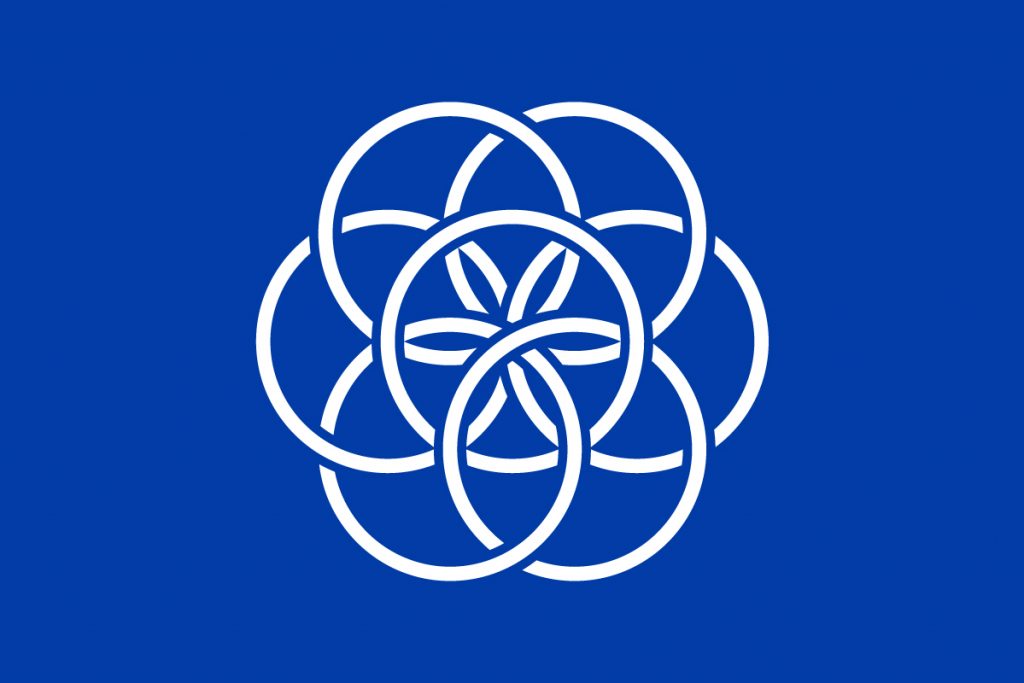
The flag is a marker of common identity and adherence to a certain set of universal values. Often, common identity is discovered when faced with a common threat. The viral threat is obviously global so a global identity needs to be encouraged, as a basis for global cooperation. Using a flag in order to achieve this might seem as pedantry but when overlapping the war narrative with the meaning of flags in conflict, Oskar’s flag has more punch that it first seems.
2020 marks the 75th anniversary for the iconic Raising of the Flag photo taken by Joe Rosenthal of The Associated Press in Iwo Jima, during brutal World War Two fighting between the Americans and the Japanese in the Pacific. The photo became immensely successful, driving war bonds sales and creating hope and raising morale within the ranks and in the general population. It is a text book example of how a flag can have both a strategic and a tactical impact.
Yuval Harari writes about some false choices and about some hard choices in his Financial Times piece. He asks “Will we travel down the route of disunity, or will we adopt the path of global solidarity? If we choose disunity, this will not only prolong the crisis, but will probably result in even worse catastrophes in the future. If we choose global solidarity, it will be a victory not only against the coronavirus, but against all future epidemics and crises that might assail humankind in the 21st century.” In order to have solidarity, we also need symbols. When we cheer for the Chinese because the epidemic is dying down in China, we cheer for ourselves as well because we viscerally know that we are in this together. Humanity is winning in China right now, not the Chinese. Similarly, when we shed tears for the Italians, we do so because we are also worried for ourselves. We naturally relate to these emotions and we are impacted by them, based on our common humanity. A symbol that could act as a lens to focus these feelings can be a powerful tool in the fight against the novel coronavirus.
There is no Mount Suribachi in which to plant the flag of Earth in and claim victory but it can be planted on the walls of hospitals on the frontline of the epidemic, on the medical equipments and surgical masks that should be paid from an international fund managed or with oversight from W.H.O. and the U.N, produced and distributed under W.H.O guidance and supervision, to make sure they first arrive where they are needed the most. It should be graffiti in the slums of Sao Paolo, Naples, Bucharest or Cape Town, instilling the sense that we are all in this together. We should see this symbol on the eventual vaccine that should be distributed globally. It should be the banner that we rally behind from now on, after facing and beating a truly global enemy.






